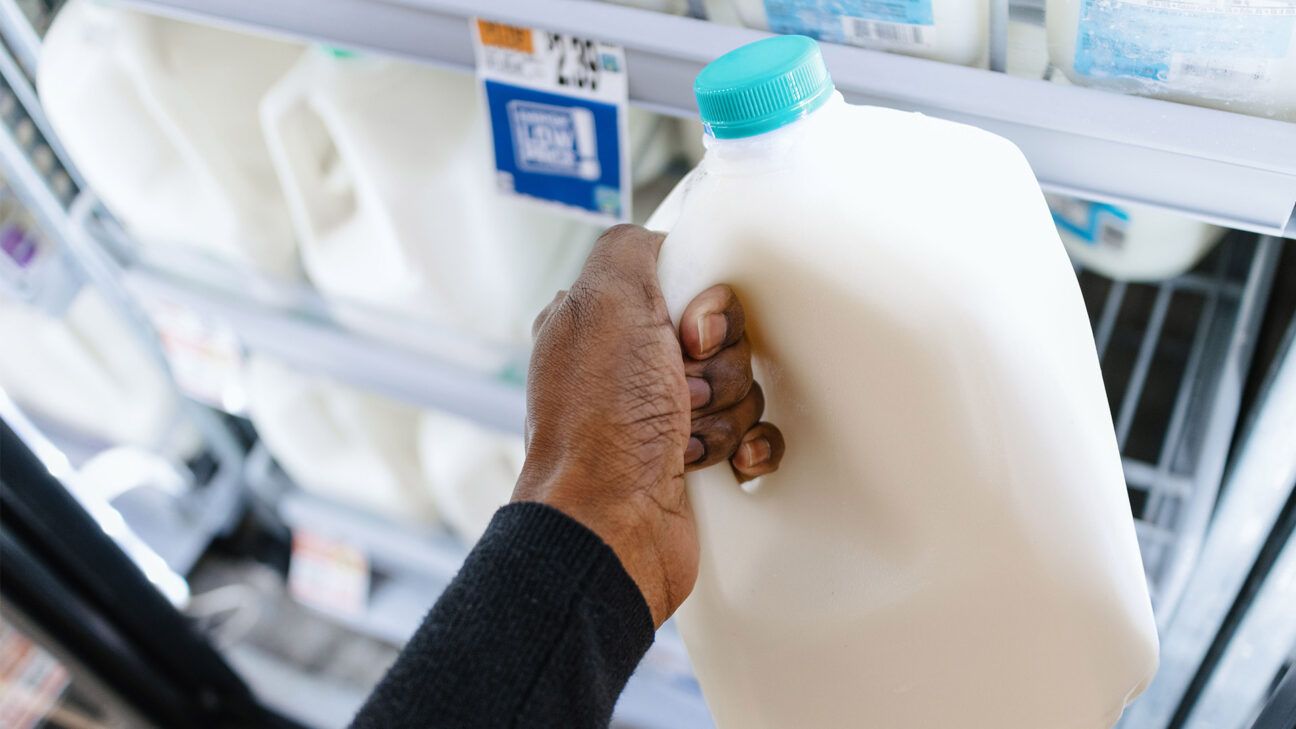
- The FDA has discovered the presence of the avian flu virus in dairy milk.
- Commercially available milk products are still believed to be safe for consumers because they have undergone pasteurization.
- Raw milk products may carry the avian flu virus, in addition to other risks.
Avian influenza, or bird flu, has been detected in dairy milk in the United States, but the FDA has indicated that the disease has a low likelihood of causing illness in humans.
In an
The disease, known as highly pathogenic avian influenza (HPAI), is very contagious and often deadly in poultry, but, despite its name, is not readily transmissible to humans, though some infections have occurred.
The FDA has stated that despite identifying bird flu in raw milk, as well as traces of the H5N1 virus in milk sold at grocery stores, commercial dairy products are still safe to consume because almost all of them (99%) have undergone
However, the virus may be present in raw milk products, which the organization has
William Schaffner, MD, a Professor of Infectious Diseases at the Vanderbilt University Medical Center, concurred with the FDAs assessment that transmission of the disease is unlikely, especially from milk.
“This is a virus that does not have the genetic capacity to be transmitted from person to person. And this virus has been around in the world, in bird populations for a decade, and it still has not acquired this capacity,” he told Healthline.
“I have in my hand a cup of coffee with milk in it. I put milk into my oatmeal. I had no concern about it,” he added.
According to the
Despite being found in dairy cows, to date, regulators and public health entities are only aware of two cases of HPAI transmission to humans.
At the beginning of April, the CDC
Diseases transmitted between animals and humans, known as
Transmission can also occur between different species of animals, such as birds and cows.
“When wild birds set down to drink water and feed along their migratory path, they can actually excrete the virus out of their saliva and their urine and their poop, and put it into the environment in such a way that it can occasionally get into mammals,” said Schaffner.
From there, it can easily spread across feedlots and, in this case, the milk supply.
“Not surprisingly, in a herd that’s jammed close together, where there’s a lot of cow saliva and urine and poop, it can be transmitted among the cows,” he said.
Though virus particles of HPAI have been detected in pasteurized milk, the risk of transmission of HPAI is extremely unlikely, but it may be possible in raw milk.
“The FDA does not have any concerns that our milk supply is contaminated and see no health threat or concerns for consumers at this time,” Joseph Lambson, PharmD, Director of the New Mexico Poison and Drug Information Center, and an Assistant Professor at the University of New Mexico College of Pharmacy, told Healthline.
“They still highly urge against using raw milk or products that utilize raw milk for the same concerns that they’ve been saying for years and years, which is you’re just at increased risk of infection. And so you can definitely include this highly virulent form of avian flu to that list,” said Lambson.
The FDA warns that raw milk can carry dangerous pathogens, including salmonella, listeria, and campylobacter.
Commercially available milk undergoes pasteurization, which is a process in which milk is heated and then cooled in order to destroy pathogens. The process has been used on milk for public health purposes for over one hundred years in the United States.
“Pasteurization is required by the FDA if you’re moving milk products from one state to another. They have to follow a specific temperature and time. That should kill the virus. So the inactive virus may be in the milk, but it’s not going to be able to replicate, so you can drink it safely,” said Sylvia Ley, PhD, an Assistant Professor of Epidemiology at Tulane University School of Public Health and Tropical Medicine.
Viral fragments may remain in milk after pasteurization but are not considered to pose a risk to consumer health.
Additionally, the FDA and USDA have stated that milk from sick cows is actively being diverted from the food supply.
Lambson encourages anyone concerned that they have consumed a contaminated product to contact their poison control center, where they can get medical advice about symptoms to look for and whether or not they should seek medical treatment.
“Additionally, it also helps from a surveillance purpose to see if we’re having an increase of exposures,” he said.
The FDA has discovered the presence of avian influenza in dairy milk.
Regulators have cautioned that there is little to no risk of infection in commercial milk due to pasteurization. However, the virus may be present in raw milk.
Only two known cases of transmission of the virus are known to have occurred recently in humans.